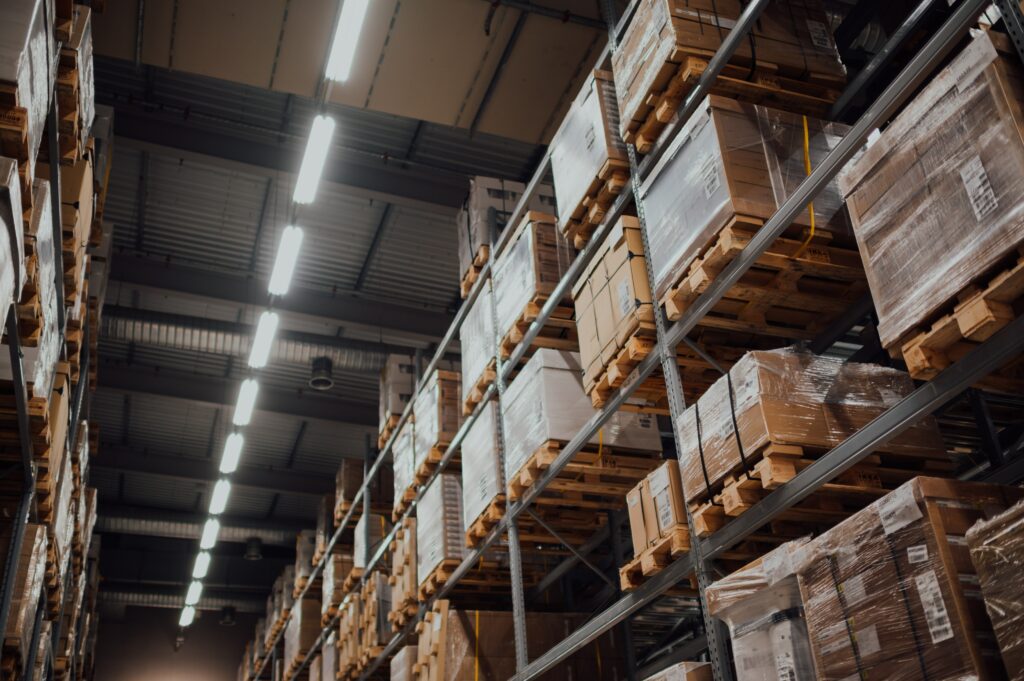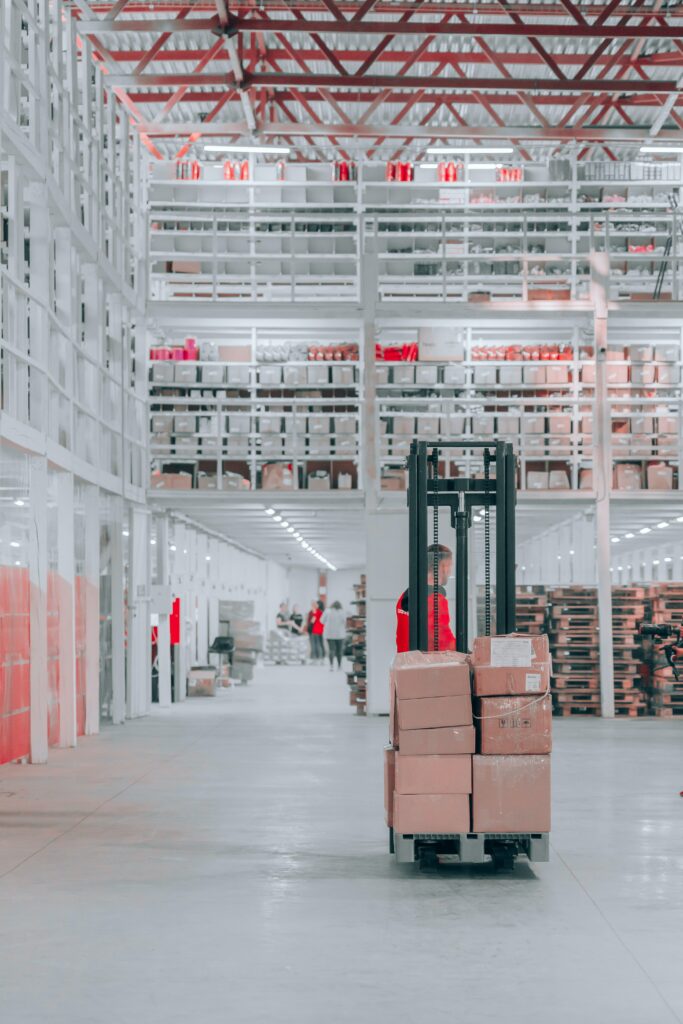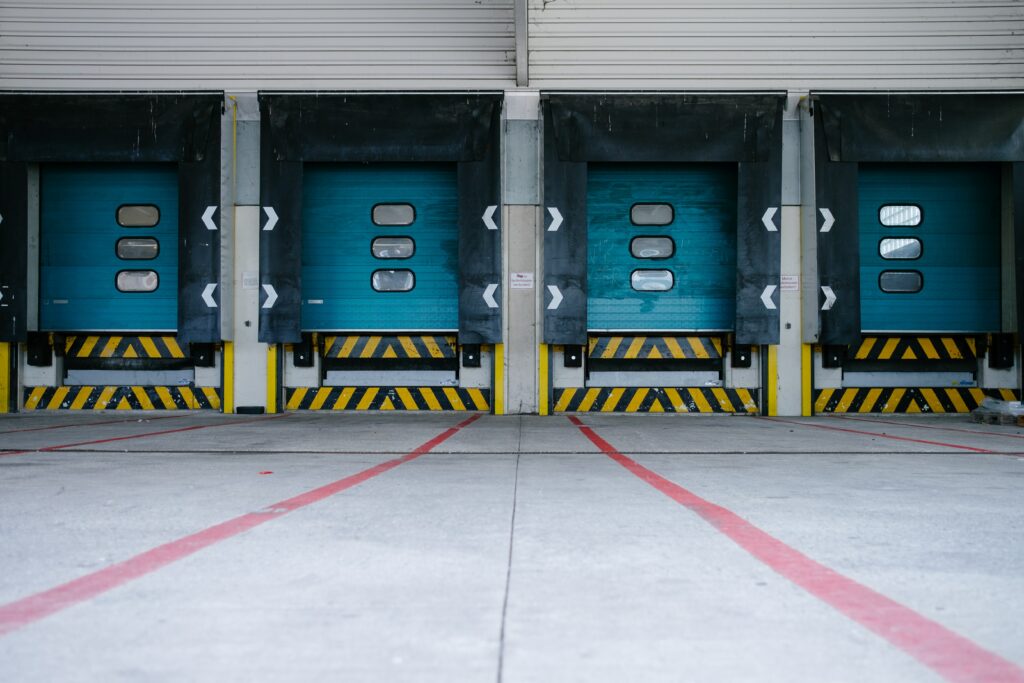12.30.22
Are Warehouses and Distribution Centers the Same?
When it comes to logistics, there are a few key differences between warehouses and distribution centers. While often referred to interchangeably, warehouses and distribution centers are, in reality, two separate entities. Both, however, are vital to the distribution process by continuing the movement of products and merchandise down through the supply chain.
Standard supply chains primarily used warehouses to stockpile inventory for the foreseeable future—however long that might have been. Modern supply chains, however, are now able to predict future product demand, and deliver items to distribution centers in a timelier manner.
A traditional warehouse can still serve a necessary and significant purpose in the supply chain but the role of distribution centers has evolved (We’ll talk more about that later). A facility like the Freeport Center, centrally located in the Intermountain West, that is able to accommodate both warehousing and distribution as well as manufacturing, is a key player in supply chain success. Let’s take a deeper dive into distribution centers and warehouses, and the roles each plays in the supply chain.
What Is a Distribution Center?
Distribution centers are facilities that are a key part of the order fulfillment process. They manage the process of receiving, storing, handling and shipping goods. Distribution centers typically receive goods from a company or supplier’s warehouse and then store them for a short period of time. Merchandise is then packed and prepared for transit to its final destination.
Distribution centers are critical for a company’s success by optimizing order fulfillment services. They are able to handle inventory management within the facility as well as inventory management for products in transit to their next destination, and continue moving those goods down the traditional supply chain. This part of the process ensures that goods and merchandise are shipped to wholesalers, retailers or consumers in a timely manner. The prompt delivery of retail and warehouse orders are key to customer satisfaction. Distribution centers are a key part of supply chain strategy and vital to maintaining a competitive edge in today’s marketplace.
What Is a Warehouse?
Once the main hub of getting goods into the hands of consumers, warehouses are still an important part of the distribution process. They are locations where companies can store goods in the long term—whether it’s the raw materials needed to create a company’s goods or completed products that are ready to be shipped to stores for sale or directly to consumers who make purchases online.
Warehouses also help to ease the distribution process for companies. Warehouse management generally will track, ship and oversee a company’s inventory before it is sent on to distribution centers. Though they have far fewer functions than distribution centers and are mainly intended to store goods for a long period of time, warehouses are a vital part of ensuring the distribution process flows smoothly.
Distribution Center Vs Warehouse: the Main Differences
The most significant differences between distribution centers and warehouses are the roles they play in the shipping process and the amount of time goods spend in the facility.
As we mentioned, distribution centers are locations for companies to temporarily store products, then package those items for shipping to fulfill orders that serve external customers. Warehouses are a long-term storage strategy for a company’s materials and merchandise that keep goods secure until they are needed. Goods cycle through distribution centers much faster than they do through warehouses.
More often than not, purchase orders are sent through distribution centers rather than warehouses. Warehouses are usually a company’s behind-the-scenes storage for goods in waiting. Think of distribution centers, on the other hand, as the bridge between customers and suppliers because they complete orders and prepare shipments of goods to continue down the supply chain.
In summary: warehouses are specifically designed to effectively store a company’s materials and goods long-term, while a distribution center fulfills orders as they are processed and meets the requirements of a company’s customers.
Is Warehousing Part of Distribution?
While a distribution center can be defined as a warehouse, a warehouse is only a part of the distribution process and cannot be classified as a distribution center. Warehouses are an element of distribution, though they themselves are not distribution centers. Warehouse management includes storing items and goods long-term before they are sent to distribution centers for the final stages of distribution. They hold items for companies while distribution centers must also process and fulfill orders. Both warehouses and distribution centers are vital pieces of the supply chain in completing orders for companies and clients.
Have the Roles of Warehouses and Distribution Changed?
Both warehouses and distribution centers have gone through changes in recent decades. To stay current, many facilities have had to close the doors on the past and embrace the capabilities of modern technology.
Modern warehouses and distribution centers have employed the use of technology to advance and streamline the processes that go into supply chains. Using technological advancements like drones, AI and barcoding, these facilities have sped up many parts of the distribution process and increased employee safety. The use of modern technology has also led to an increase in sustainability for many companies. Using cleaner energy like LED lights and smart warehouses can also help companies save a lot of money.
Why Freeport Center?
Despite their differences, both warehouses and distribution centers are vital for a company’s success within supply chain management, and ultimately, customer satisfaction. And there is nowhere in the Western United States that is better prepared to create and manage your own warehouse or distribution center than the Freeport Center in Clearfield, Utah.
Known as the location where business meets lifestyle, the Freeport Center provides a strategic location with convenient access to an expansive transportation network of airports, highways and railways, as well as 78 buildings sprawled across our massive 680-acre property all of which simplify transportation management. We are home to well-known companies such as Lifetime Products, Northrop Space Systems Inc., Thompson Manufacturing, Cornwell Quality Tools, International Engine Parts and many more. We have a building for companies of all sizes ranging from 4,000 to 400,000 square feet. As the major warehousing and distribution hub with our own distribution networks in the Intermountain West, Freeport Center is equipped to handle the warehousing, manufacturing and distribution needs for your company.
Contact the Freeport Center today to learn more about starting your company’s distribution center in partnership with us. We will ensure that your company’s needs are met and that your warehousing, distribution center, and fulfillment services run smoothly and efficiently right from the start.



